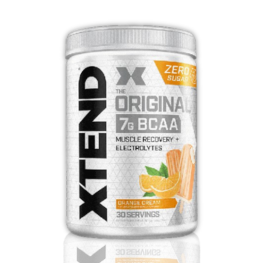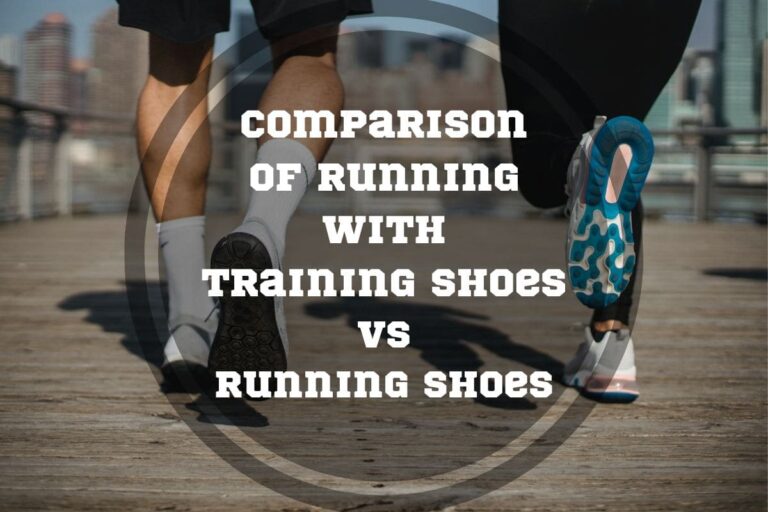Running 8 Miles A Day: Benefits, Risks, and Useful Tips to Progress Your Run
Running is one of the most available and effective sports for many people. If you love to run, you know the excitement that makes you want to run longer. Often runners think about new achievements, and, as a result, many set the goal of running 8 miles a day.
However, this is not the easiest distance, and it requires more preparation time. How to run 8 miles a day without compromising your health? What are the advantages and disadvantages of this distance? How long does it take to run 8 miles? There are many questions, but all the answers are in this article. Let’s discuss all the details together!
Running 8 miles a day is possible with a proper training plan and good rest. It has some health benefits and will help you improve your running performance. A moderate increase in distance will provide you with risk-free running and various loads.

Pros and Benefits of Running 8 Miles A Day
8 miles is a significant distance that requires some training and experience. Running 8 miles a day is enough to greatly strengthen your cardiovascular system and reduce the risk of developing heart disease. If you are a professional athlete or a trained amateur and running is a regular process for you, daily 8-mile training will bring you many positive effects:
Long runs strengthen leg muscles and improve overall body endurance. Daily exercise increases the number of small blood vessels in the muscles, thereby improving the oxygen supply and increasing performance.
- Regular exercise of the core muscles (including the abs and back) improves balance. As a result, you get better coordination of movements, and your running technique becomes natural and relaxed.
- Running in moderation is recommended to prevent arthritis and osteoporosis. Research shows that runners have higher bone density and healthy joints.
- With proper nutrition, regular exercise lets you quickly get rid of excess weight and keep the body in shape.
Our Recommendation

This BCAA Powder, with its extensive range of mouth-watering flavors, XTEND Original, was designed to help you hydrate, repair, and recover.

Cons of Running 8 Miles A Day
Despite all the advantages of running 8 miles, it has disadvantages and risks. They can appear if you overestimate training intensity without preparation or set the wrong running plan. Here are the most common risks:
- Lack of progress. Regular repetition of the same workouts can lead to the fact that your progress will cease to develop, and your runs will not bring any impact. If they differ in duration and amount of load, it allows you to vary the load and get various adaptations in the body, not just get used to one comfortable pace.
- Increased injury risk. If you lack sufficient rest or have a regular excessive intensity of training, the risk of injury inevitably increases. Rest is essential for everyone, even professional athletes, so resting weeks (with less training and reduced volume) and/or periods of complete rest are a must for sufficient recovery.
- Risk of overtraining and burnout. Overtraining happens when you experience fatigue during low-intensity training, your appetite and sleep are disturbed, and your motivation lowers. Overtraining often occurs with an uncontrolled increase in training load and leads to the depletion of the body’s resources.
Is 8 Miles a Long Run?
Yes, running 8 miles is considered a long run that requires certain skills. If you aim for 5k or 10k, then 8 miles is a great endurance workout and will allow you to easily run those distances. However, if you aim to finish a half marathon or even a marathon, running 8 miles is not enough, and you should gradually increase the distance and training time.

4 Ways to Add Variety to Your 8-Mile Runs
1. Weekly Run Schedule
To make running 8 miles every day a pleasure and not a heavy burden, you should add variety to your training schedule. Many factors affect your running, providing you with a different load.
So, running in the morning differs from running in the evening or the middle of the day. Such seemingly insignificant factors as temperature, light intensity, weather, and mood allow you to vary your workout.
Try a light jog before breakfast, then workout after a light lunch the next day, and you’ll notice the difference. The lack of monotony and some schedule changes will help you adapt to any conditions and be a more adaptable runner who can cover any desired distance.
2. Don’t Ignore Rest Days
Running differs from other sports in the load on the musculoskeletal system. It accumulates slowly, day after day, reaching a critical value. With an excess shock load, the muscles, joints, and tendons cease functioning normally, resulting in different injuries.
You can run 8 miles every day, but remember that the muscles get stronger during rest. The nervous system also gets tired from training, and given that everyone has a lot of daily activities, you risk overloading the nervous system with daily running. Do one rest day a week to restore the body and increase motivation.

3. Cross Training
While running, even at different paces and different routes, people use the same muscle groups. It may sound strange, but just running won’t help you improve your performance. If you want to boost your 8-mile run, you should consider other training options.
Replace one running session weekly with strength training, boxing, tennis, or any other sport. This will allow you to pump the whole body and make it even stronger. For example, you can try yoga, pilates, a bike ride, or swimming on your rest day toreplace one run a week.
4. Change Your Pace and Route
You can run daily on one familiar route at the same pace. But will such training bring you pleasure and improve your results? Most likely, no.
You should consider changing pace and routes to make the 8-mile run your training routine. Experts recommend doing easy runs at least twice a week. Try adding easy running on a flat road and alternating it with jogging downhill. Uphill and downhill running allows you to activate different muscle groups and strengthen your legs.

Do one interval workout – start with an easy run, add maximum acceleration, and alternate intervals in a comfortable mode. Do not run too fast immediately, and always start your workout with a light warm-up. You can add more speedy intervals one day and choose more slow intervals for the next run, diversifying them with short accelerations.
What Is a Good Time For an Eight-Mile Run?
Factors such as gender, weight, age, overall running experience, and route determine running speed. However, there are standards that you should aim for.
Beginners and amateurs typically add walking or jogging intervals to the 8-mile run, so their average time to run 8 miles is an hour and a half. The average time for 1 mile is 10.30-11.30 minutes.
Experienced runners can run the entire distance without stopping, and their average total running time of 8 miles is about 60-70 minutes. So they do 1 mile in 7.30-8.30 minutes.
How Long It Takes to Run 8 Miles?
Let’s take a closer look at the 1-mile and 8-mile time for beginners and advanced runners. Thus, it will be easier for you to monitor your progress and set training goals.
The table shows how long it takes to run 8 miles depending on your fitness level.
| Min per mile beginners | Min per 8 miles beginners | Min per mile advanced | Min per 8 miles advanced |
|---|---|---|---|
| 11.30 | 92 | 9.00 | 72 |
| 11.00 | 88 | 8.30 | 68 |
| 10.30 | 84 | 8.00 | 64 |
| 10.00 | 80 | 7.30 | 60 |
| 9.30 | 76 | 7.00 | 56 |
How to Run 8 Miles without Stopping?
If you go for a run and after a while – you cannot continue running and continue walking; this indicates low stamina. This means that you have not developed the physical and psychological ability to maintain a steady pace and a certain level of effort over a long period. You feel tired, and your brain tells you to stop. In addition, muscles and ligaments may also not be ready for prolonged stress.

The good news is that almost every beginner can improve their endurance significantly if they train properly. If you can run 3 and 5 miles without stopping, then you have already reached some success, and 8 miles is an achievable goal. Here are the main conditions that will help you run 8 miles non-stop:
- Regular workouts. Rest is necessary, but pausing for more than three days worsens your performance. If you need to take a break from running, try adding some sport to keep you fit
- Long runs at a low heart rate. This is the best endurance workout that will allow you to increase the distance you can run non-stop.
- Strength training. It allows your body to handle more stress, including long runs, by strengthening your muscles.
FAQ
How Many Calories Does Running 8 Miles Burn?
The number of calories burned running 8 miles depends on many factors. This is your metabolic rate, weight, gender, pace, and track. So how many calories do you burn running 8 miles? On average, for 8 miles of continuous running at an average speed, you can burn from 1000 to 1400 kcal.
Is 8-mile Run Long Enough for a Long Run in Half Marathon Training?
You can run a half marathon if you regularly practice running 8 miles, but it can be a tough challenge for your body. If you are aiming to run a long-distance half marathon, you can do an 8-mile run every day, but consider adding 10-12 miles runs once a week.
Conclusion
Regularly running 8 miles depends directly on the amount of inner energy that you have. It is very important to avoid overwork and emotional or physical burnout. If you want to move from running 8 miles a week to 8 miles daily, you need to listen to yourself and your body and plan your workouts to stay in harmony and balance with yourself.
Add strength training, change loads, experiment with pace, schedules, and routes, and enjoy your run!
How many miles per day do you run? What strength training is your favorite? Share your experience in the comments below.
Also read:
- Running 6 Miles a Day
- How Much Running Is Too Much
- Good Time for Running a Mile
- How to Run a Mile Without Stopping
- Losing Weight to Run Faster
- 10 Minute Mile
- Does Running Build Leg Muscle
- Does Running Build Calves
References:
- Meta-Analyses of the Effects of Habitual Running on Indices of Health in Physically Inactive Adults // NCBI: https://www.ncbi.nlm.nih.gov/pmc/articles/PMC4579257/
A systematic review of running-related musculoskeletal injuries in runners // Pubmed: https://pubmed.ncbi.nlm.nih.gov/33862272
Factors Influencing Running Performance During a Marathon: Breaking the 2-h Barrier // NCBI: https://www.ncbi.nlm.nih.gov/pmc/articles/PMC8924290/
If you have any questions or suggestions, you can contact us via email – [email protected]






